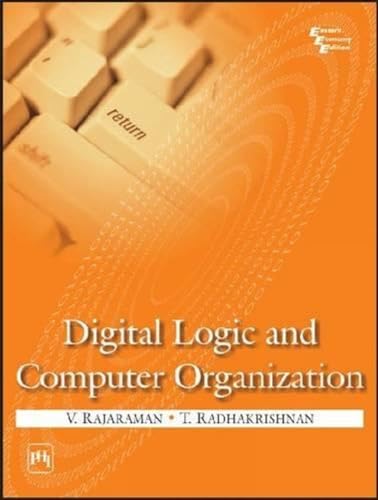
Synopsis
This introductory text on 'digital logic and computer organization' presents a logical treatment of all the fundamental concepts necessary to understand the organization and design of a computer. It is designed to cover the requirements of a first-course in computer organization for undergraduate computer science, electronics, or mca students. Beginning from first principles, the text guides students through to a stage where they are able to design and build a small computer with available ic chips. Starting with the foundation material on data representation, computer arithmetic and combinatorial and sequential circuit design, the text explains alu design and includes a discussion on an alu ic chip. It also discusses algorithmic state machine and its representation using a hardware description language before shifting to computer organization. The evolutionary development of a small hypothetical computer is described illustrating hardware-software trade-off in computer organization. I
"synopsis" may belong to another edition of this title.
Search results for DIGITAL LOGIC AND COMPUTER ORGANIZATION
Digital Logic And Computer Organization
Seller: Vedams eBooks (P) Ltd, New Delhi, India
Soft cover. Condition: New. Contents Preface 1 Data Representation 2 Boolean Algebra and Logic Gates 3 Combinatorial Switching Circuits 4 Sequential Switching Circuits 5 Arithmetic and Logic Unit 6 Application of Sequential Circuits 7 Computer Systems Multiple Views 8 Basic Computer Organization 9 Central Processing Unit 10 Memory Organization 11 Input-output Devices 12 Input-Output Organization 13 Case Study of a Real Computer System Appendix A Suggested Hardware Lab Experiments B Decision Table Terminology References Index This introductory text on ?digital logic and computer organization? presents a logical treatment of all the fundamental concepts necessary to understand the organization and design of a computer It is designed to cover the requirements of a first-course in computer organization for undergraduate Computer Science Electronics or MCA students Beginning from first principles the text guides students through to a stage where they are able to design and build a small computer with available IC chips Starting with the foundation material on data representation computer arithmetic and combinatorial and sequential circuit design the text explains ALU design and includes a discussion on an ALU IC chip It also discusses Algorithmic State Machine and its representation using a Hardware Description Language before shifting to computer organization The evolutionary development of a small hypothetical computer is described illustrating hardware-software trade-off in computer organization Its instruction set is designed giving reasons why each new instruction is introduced This is followed by a description of the general features of a CPU organization of main memory and IO systems The book concludes with a chapter describing the features of a real computer namely the Intel Pentium An appendix describes a number of laboratory experiments which can be put together by students culminating in the design of a toy computer 528 pp. Seller Inventory # 85858
